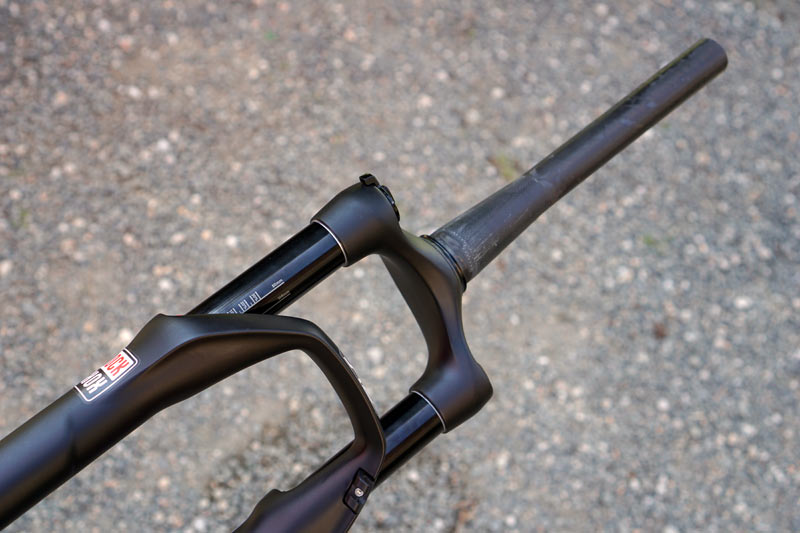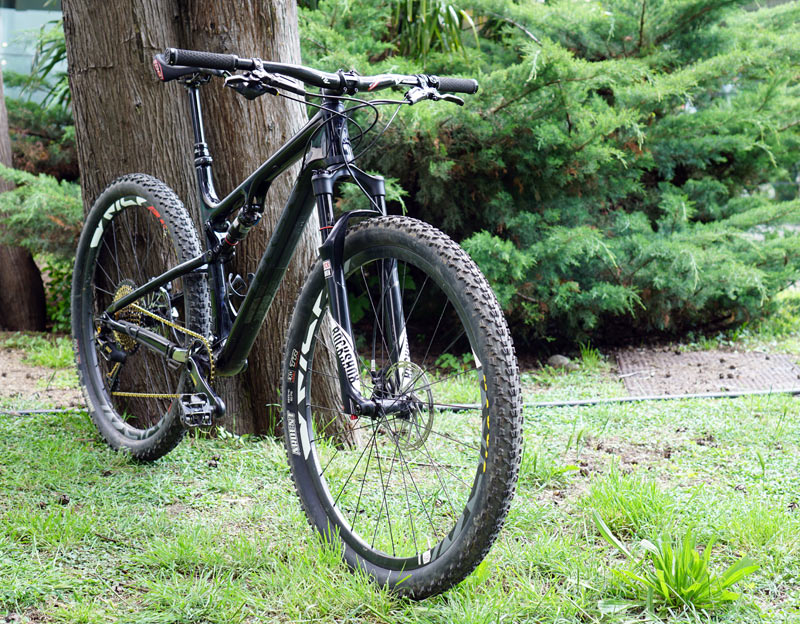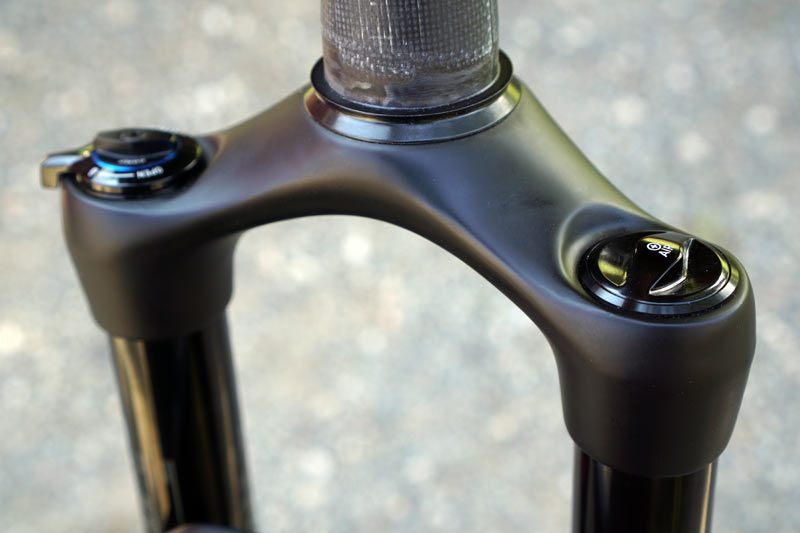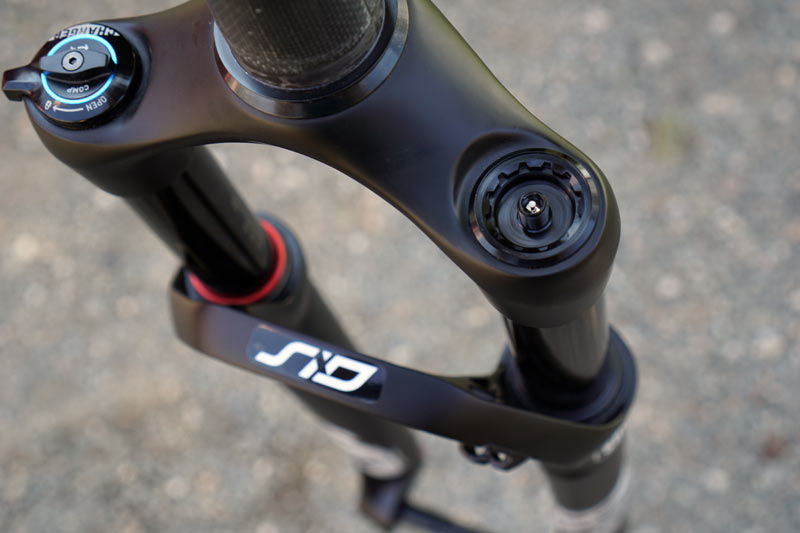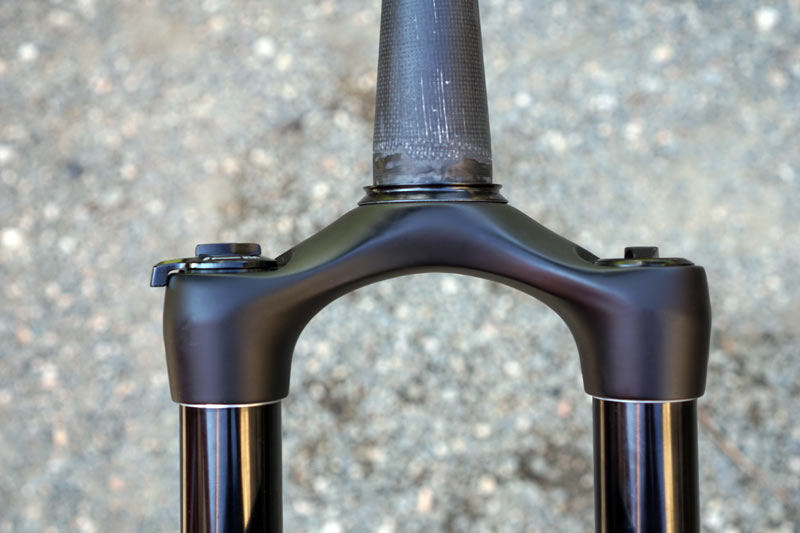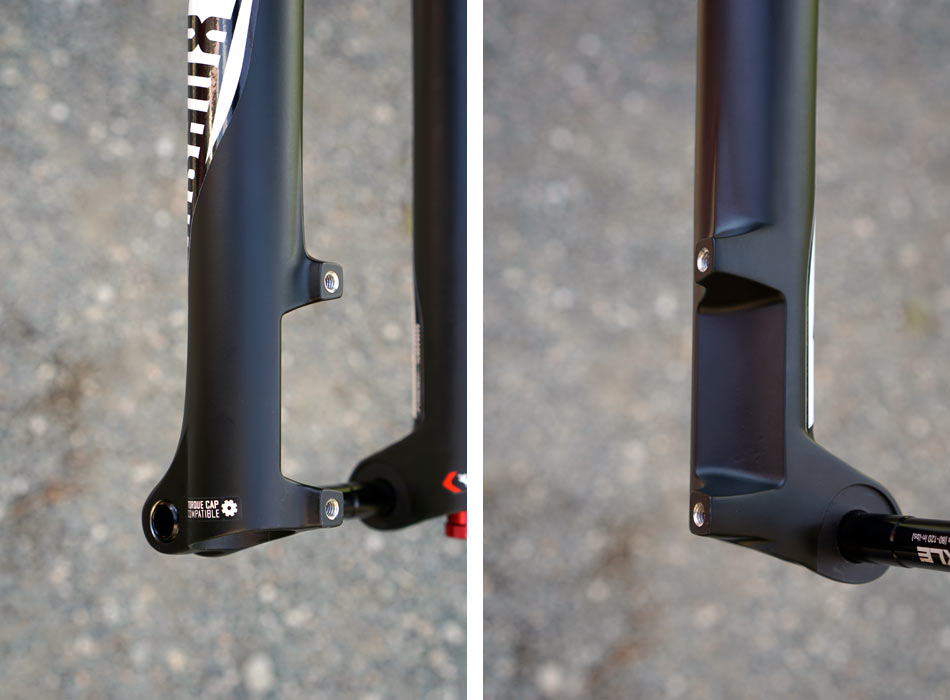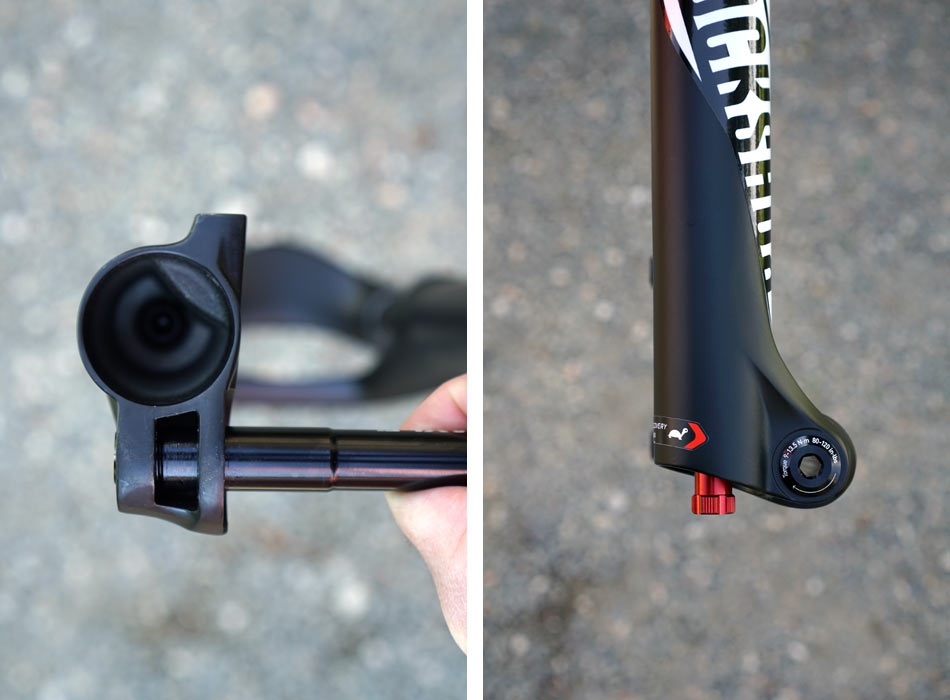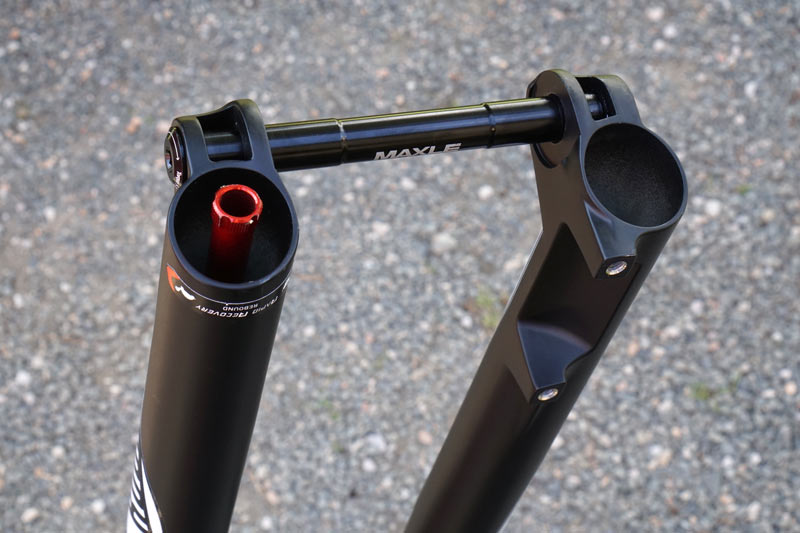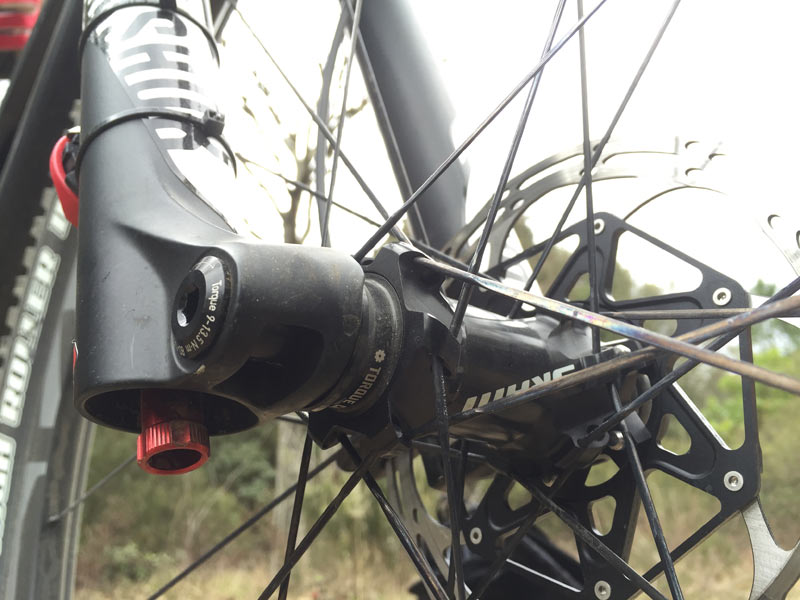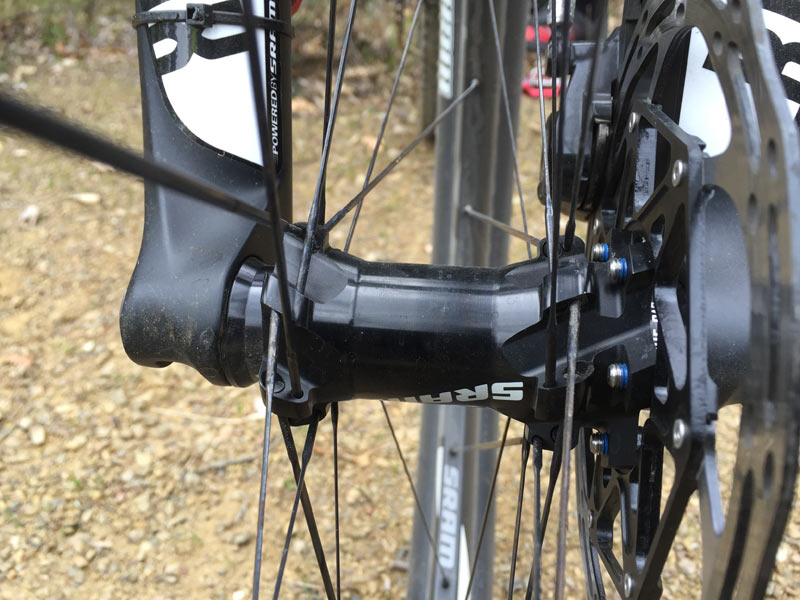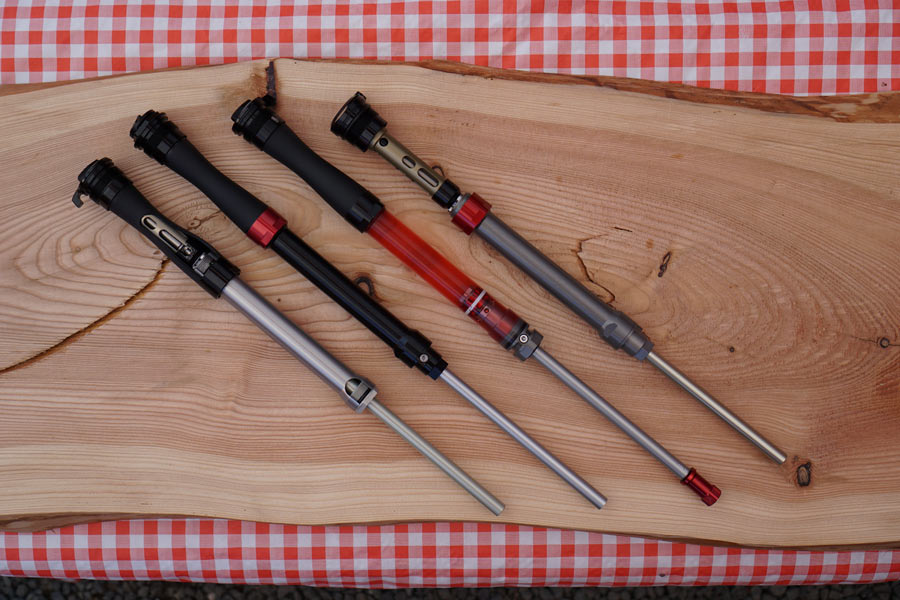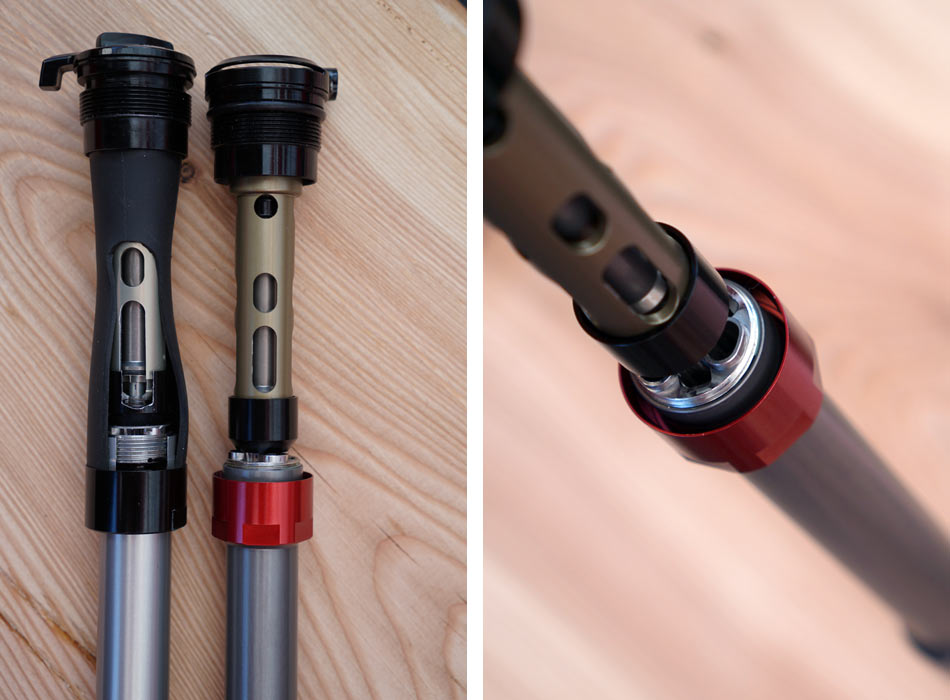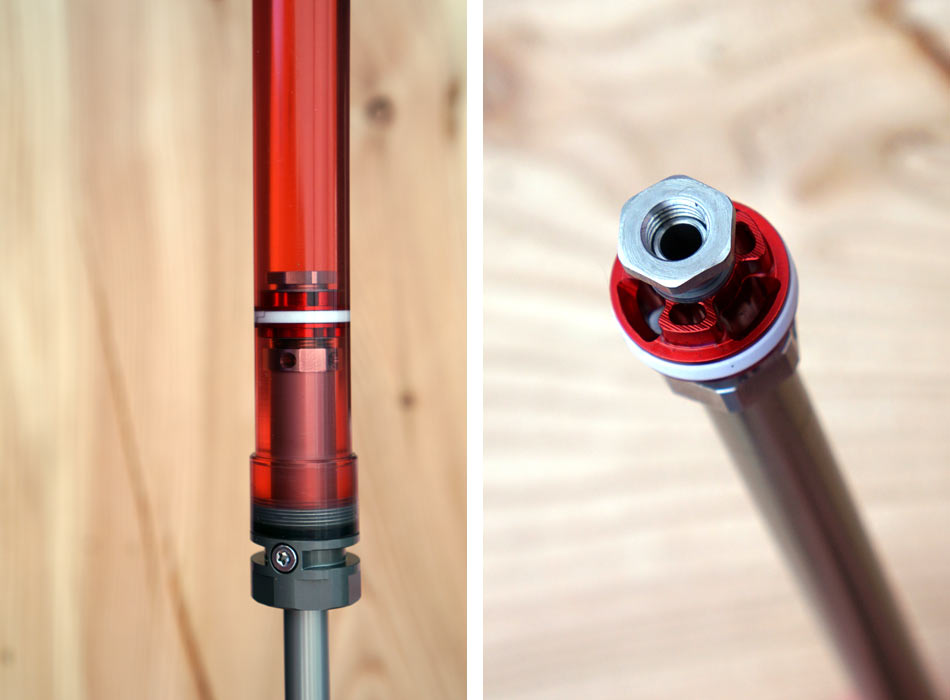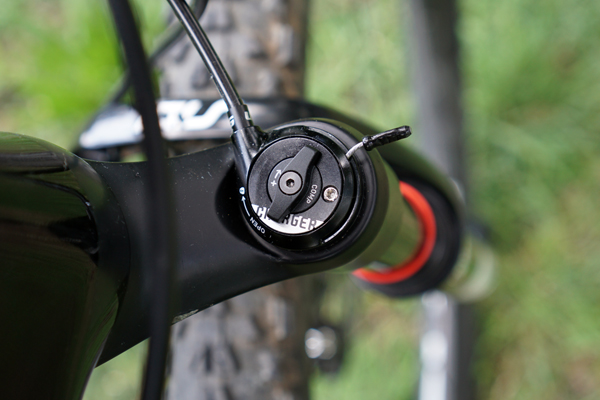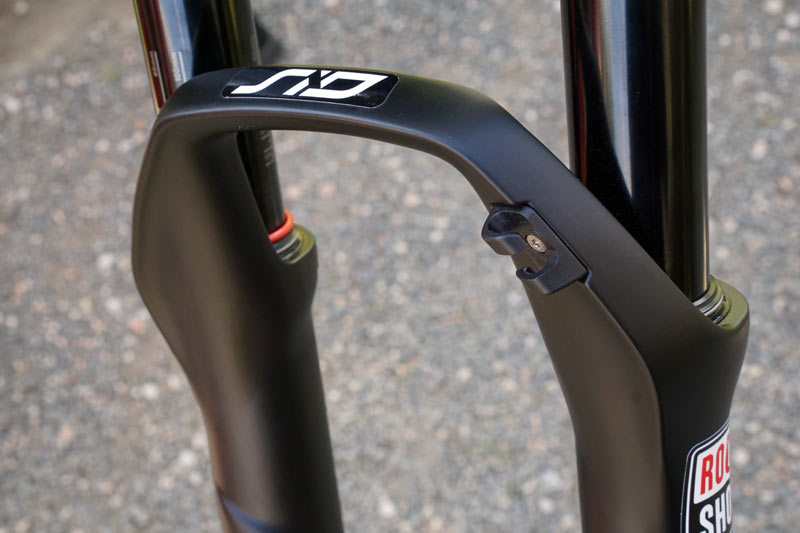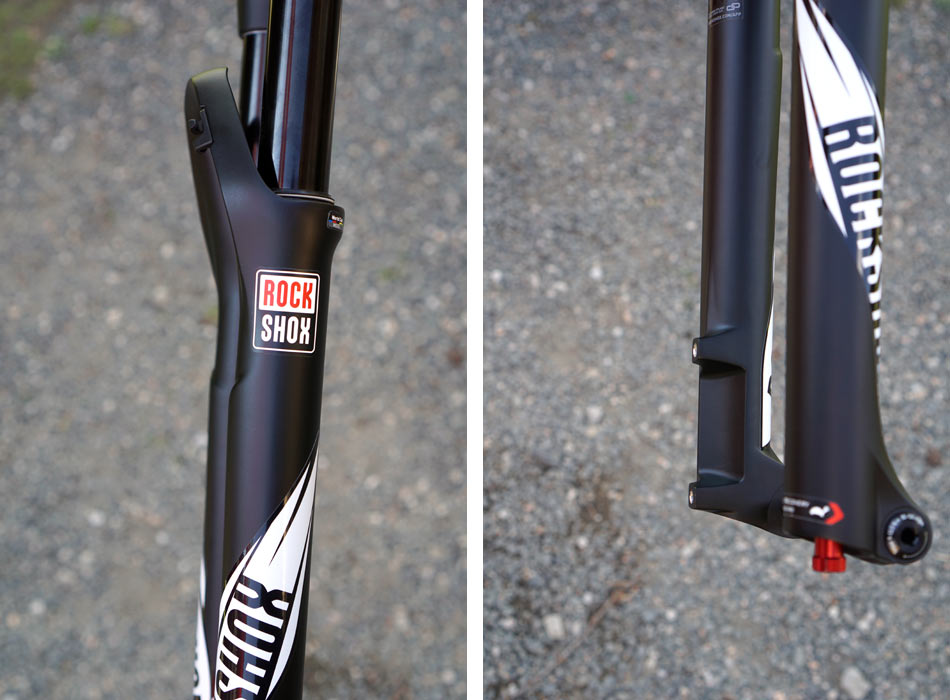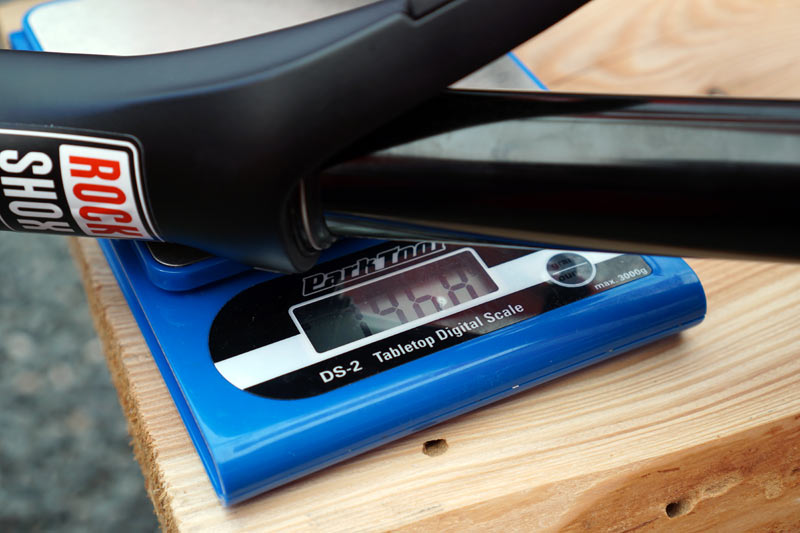While their Indy SL from about 1997 was their lightest fork ever, SID was their first fully modern, lightweight air sprung fork. It’s seen several revisions over the years, going from a minimal 30mm stanchion to the current 32mm, and travel jumping from a minimum of 68mm at launch up to a max of 120 trail-worthy millimeters. As the winningest XC fork out there and now in it’s 19th year, the new 2017 Rockshox SID gets every part of it updated.
It also goes back to it roots. When 120mm travel became popular for XC about five years ago, they had to bring the SID up to that level. Since then, though, that 120mm mark has skewed closer to trail and even light enduro, so for 2017, SID goes back to a 100mm max and is aimed at the race market. That doesn’t mean it’s delicate. Courses are getting gnarlier, and all of us continue to push our gear past its well intentioned designs. Thanks to new lowers, new damping, and so much more, the SID is up to the task…
Starting at the top, there’s a new recessed air cap that uses a cassette tool to remove the cartridge rather than a socket wrench. Why? Not only does it look much sleeker, but with the advent of Bottomless Tokens, people were removing the air cap more frequently and marring their crown or even stripping it, and this solves that problem. The SID can take up to four tokens to adjust air spring volume.
The carbon crown is mostly the same – it had been getting unannounced running updates over the years to refine the layup and pull weight out. The steerer tube is new, though, and uses a straight 1-1/8″ UD carbon tube that’s then over wrapped with woven fibers to create the taper. Overall, it’s 110g lighter than alloy crown and steerer, which is also new. Alloy crown is all new with larger cross section than before, which looks better up against the fatter 1.5″ lower head tubes than before.
By limiting it to 100mm, they were able to reduce the stanchion tube length and pull material out of the lowers, bringing weight down considerably. That’s even with putting material back into the arch, returning to a relieved truss design to improve stiffness.
Smaller seals and additional machining processes not only pull weight out, but they improve tolerances for the bushings and seals to reduce friction. The goal was to keep the legs sliding in unison so there’s no binding. The result is sliding smoothness they say is close to what they’re getting from the much burlier Pike.
Even more weight was removed by using smaller brake mount posts and more dramatic shaping of the lowers…
…included a slotted dropout and slanted bottom edge.
Dropouts are Torque Cap hub compatible, which drastically improves torsional stiffness.
The Torque Cap axle interface was introduced with the Lyrik, which is a big, strong fork. Here, they say improvement is even noticeable and has a major impact on the SID’s torsional stiffness. It’s an open standard, and their suspension product managers say there’s been a lot of interest from most aftermarket hub and wheel manufacturers. You don’t have to use it, a standard 15mm thru axle hub will also work, you’ll just have to hold the wheel in place a little better while putting it on.
Updated Rockshox SID internals
Things are fresh on the inside, too, with the all new SID Charger Damper. Left to right: Cutaway #1, complete SID Charger Damper, see-through Damper, and Damper without bladder installed.
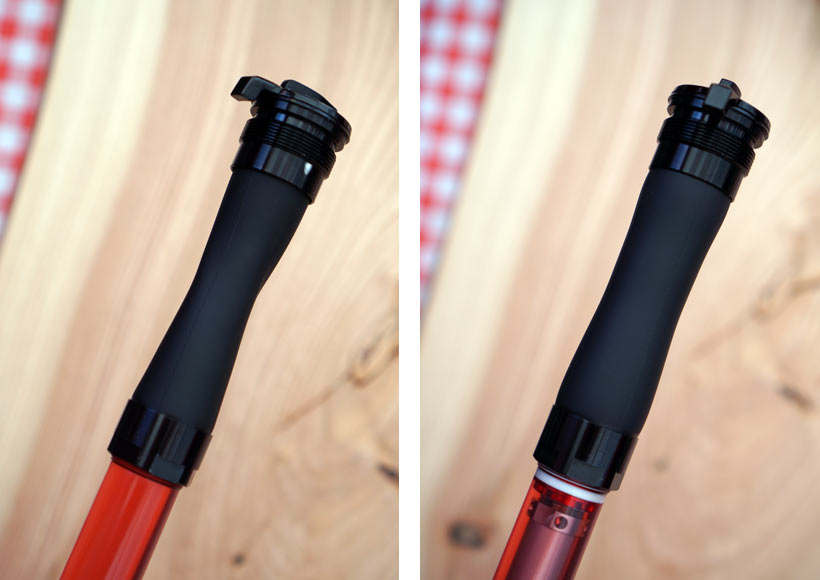
It looks similar to the Pike’s damper, but gets a slimmer hourglass shaped bladder. The pistons use a 10mm shaft that moves a lot of oil, so the hourglass shape was required to allow enough expansion without being limited by the SID’s thinner 32mm stanchions.
The new compression control knob has a wide range of adjustment to suit a very broad range of riders, from the lightest women racers to clydesdale men. This gives them a single fork to fit everyone rather than getting into “female specific” tunes, etc. It’s controlled by 19 clicks of the center/top knob, which moves a needle a full 6mm in or out of the low speed compression flow port.
There’s reduced lockout lever force, so it’s easier to turn the knob, but the actual lockout force is much stronger. And, the blowoff is much firmer, too. With Motion Control and Accelerator, the blow off would go wide open. The new SID has very limited blow off, just enough to keep you and the fork safe. All of that comes directly from pro athlete feedback.
Here’s how it all comes together: Inside the center shaft is the Low Speed Compression needle (A), which is controlled by the top/center knob. The lockout lever moves a “pivot shim” cup (B) down onto the high speed compression shim stack (C), effectively making them much, much stiffer. This is completely different than the way their Motion Control system worked. With MC, when the lockout blowoff threshold was reached, the entire lockout mechanism opened up and allowed full oil flow. With this new SID Charger system, the compression shims are only able to open a little bit during blowoff, keeping it very firm but allowing just enough movement to prevent damage or loss of control. The compression circuit has a simple rebound check valve (D) to let oil return uninhibited to the…
…Rapid Recovery Rebound circuit, which carries over unchanged.
As for tuning, they upped the fixed compression in the Dig Valve to keep it floating a little higher in the travel. The result is that it’s more linear out of the box, which makes it more appropriate for lighter riders. It ships with no Bottomless Tokens, but can fit up to four. It’s worth mentioning our Suspension Setup Guide if you’re curious what all these settings and options can do to improve your ride.
Other improvements include updated air spring O-ring seals to reduce friction, and they’re the same cold-weather approved material that’s used in the Bluto. A new cartridge seal head gets a larger bushing and stronger seal to prevent it from blowing apart under extremely hard impacts while locked out. Lastly, a cartridge bleed port has been added to allow quick and easy air removal in the unlikely event any gets in the closed system.
The SID Charger Damper will also work with their cable-actuated OneLoc remote without giving up the fine tuning compression adjustments.
One last little touch is a new tool-free brake hose guide.
All of this -the detailed casting shapes for the lowers, completely new compression damping, upgraded seals and bushings- translates into a fork that feels simply amazing on the trail. We only had one day on it at SRAM’s MTB product launch event, but it was impressive. As someone who’s ridden several generations of SID and the RS-1, I can say the improvement is immediately noticeable.
So, what’s this mean for RS-1?
The new SID will be lighter, and the suspension action seems a little lighter and more supple, so this is what their sponsored pros will be racing. The RS-1 is a stiffer fork, and they suspect it’ll remain more popular with the marathon crowd, but SID is their new XC race leader.
2017 Rockshox SID Specs & Weights
The 29er carbon crown model with 15mm thru axle weighed in at 1,468g on our scale. Lightest claimed weight is 1,336g World Cup 27.5″ World Cup.
Options include:
- SID World Cup (SID Charger Damper, carbon crown/steerer, pricing from $1150-1225 / €1255-1336 / £965-1028)
- SID RLC (SID Charger Damper, alloy crown/steerer, pricing from $845-915 / €922-998 / £709-768)
- SID RL (Motion Control damper, alloy crown/steerer, OEM only)
- SID XX (Motion Control damper, alloy crown/steerer, X-Loc hydraulic remote, $845 / €922 / £709
-
27.5 and 29er
-
15×100 and Boost 15×110
-
29er Boost lowers will fit 27.5+ up to 3.0 tires
Production begins in June, which means late July or early August availability, depending on market.
